
Nestled quietly under the canopy of the coconut forest swaying in the gentle breeze, the simple house comes into existence thanks to the reflections of the dawn sunlight. The house has a simple modern look, inheriting the shape of a traditional house with 3 compartments and 2 wings, with a large veranda surrounding it. The veranda is a transitional space and acts as a climate regulator for the whole house. Not only that, but it is also a place where countless activities connect people with the surrounding open space. The rooms all open to the garden and the doorways pull the garden into its deepest recesses. The nuanced transitions of time and space also take place in the cut of this patio.
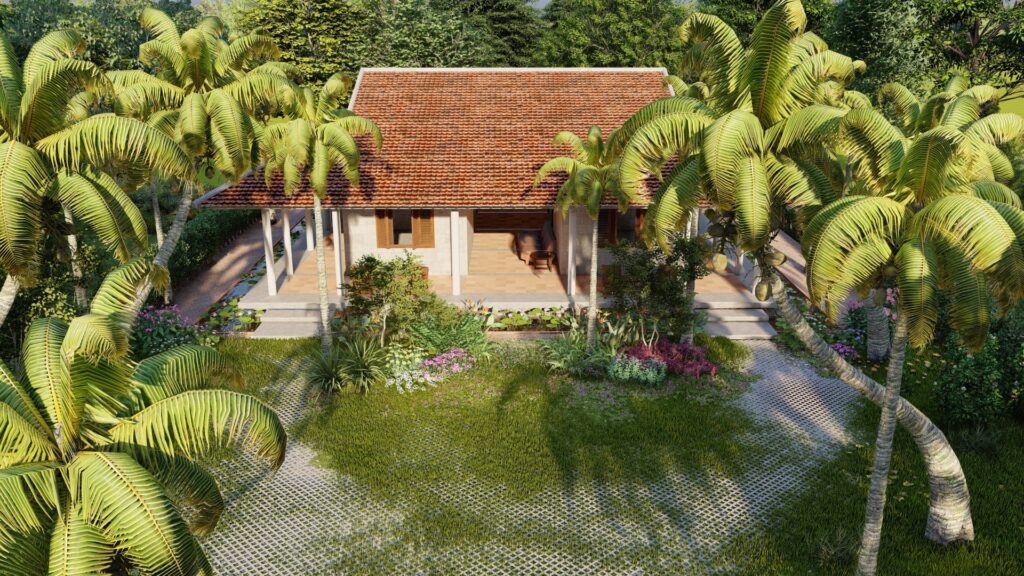
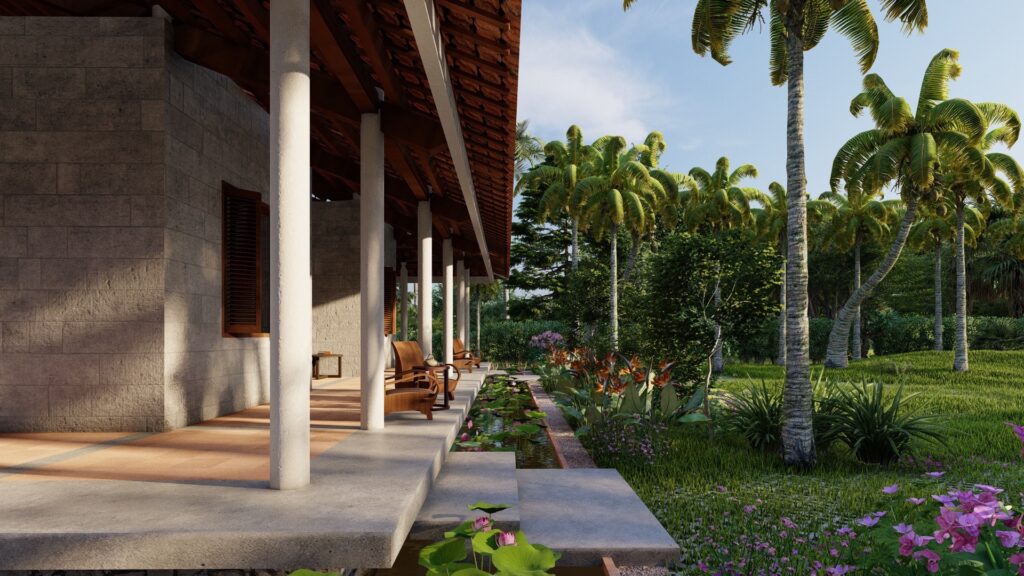
Next project | RETREAT HOME

Nestled quietly under the canopy of the coconut forest swaying in the gentle breeze, the simple house comes into existence thanks to the reflections of the dawn sunlight. The house has a simple modern look, inheriting the shape of a traditional house with 3 compartments and 2 wings, with a large veranda surrounding it. The veranda is a transitional space and acts as a climate regulator for the whole house. Not only that, but it is also a place where countless activities connect people with the surrounding open space. The rooms all open to the garden and the doorways pull the garden into its deepest recesses. The nuanced transitions of time and space also take place in the cut of this patio.


Next project | Glay Pottery Gallery
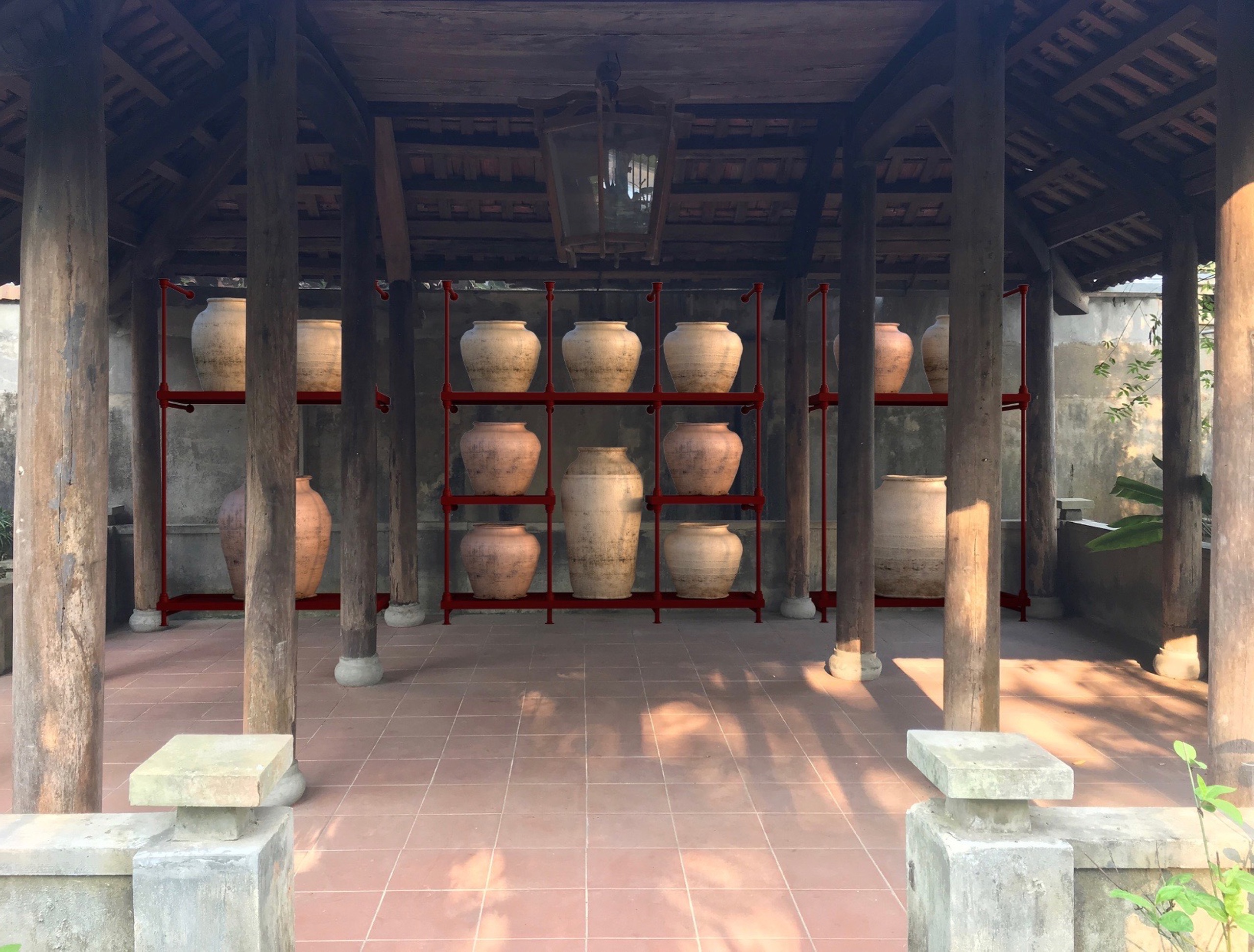
Inspired by Professor Thai Kim Lan’s collection of more than 7000 ceramic artifacts recovered from the Perfume River, an idea was born to revitalize the artifacts to match their value. All ceramic products are born from the earth and mature through fire. The heat of the fire has hardened the earth to the test of time. Dark red painted steel will represent this tempering property. The contrasting pairs of hot-cold, hard-soft are applied in the language of placement to highlight the value of time and place.
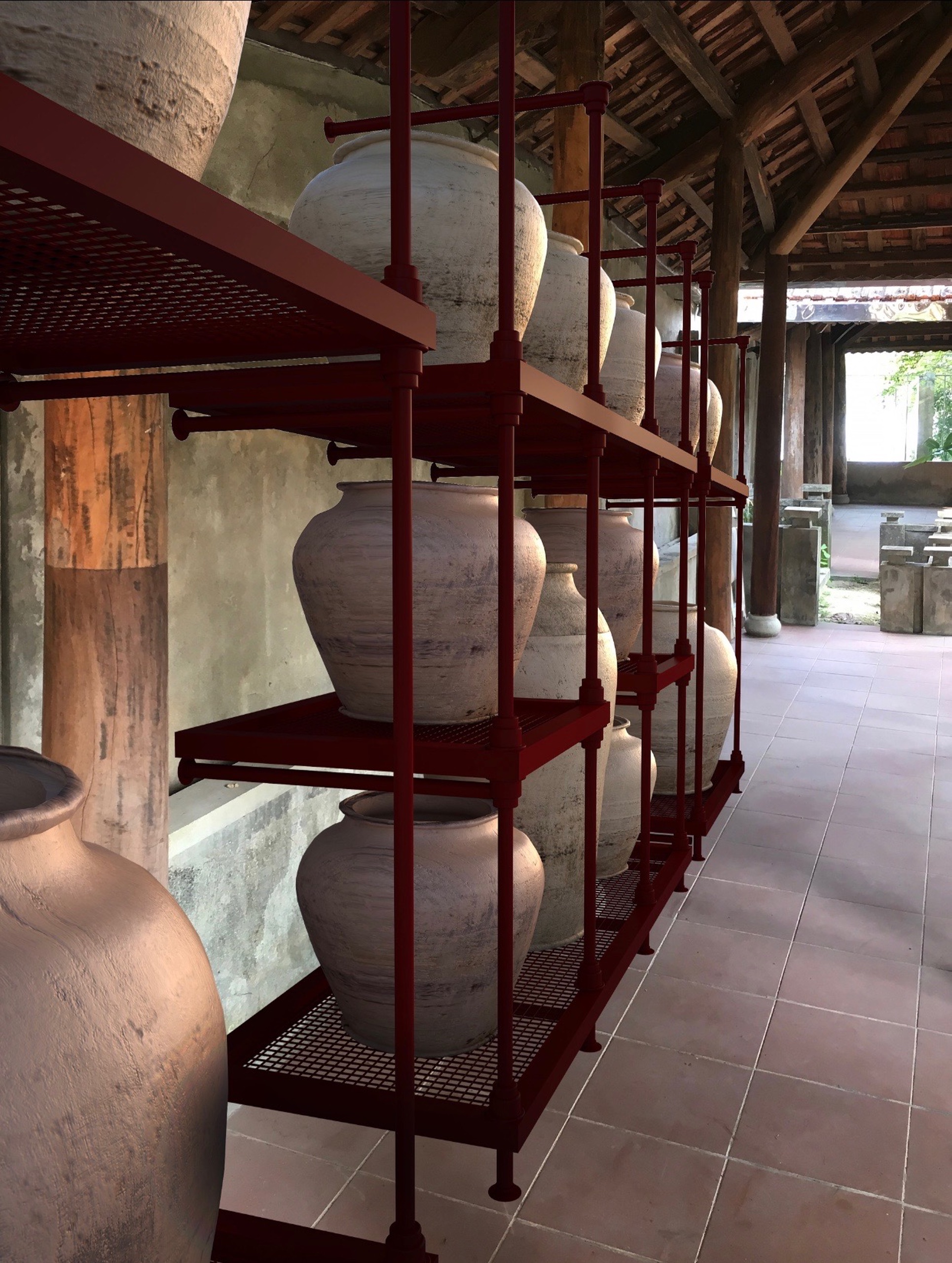
PROJECT INFO
| Type: | Art Gallery |
| Year: | 2019 |
| Location: | Thai Kim Lan Garden house |
| Team: | Ho Viet Vinh Tran Thu Ha |
Next project | Zen Garden
Zen garden carries the breath of nature, located in the coniferous forest, receiving the morning sun, immersed in the coolness of the beach. People move in free space without being constrained by position and frame of reference. The displacement no longer depends on the inside, the lower, the high and the low. Heaven and earth, plants, flowers, people become one, each step carries the breath of the pure land.

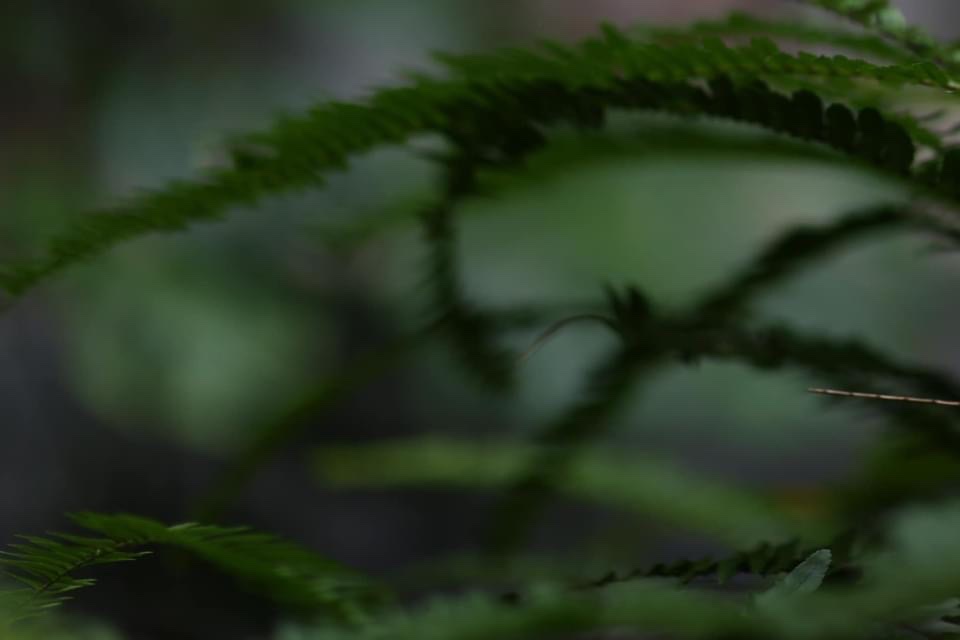
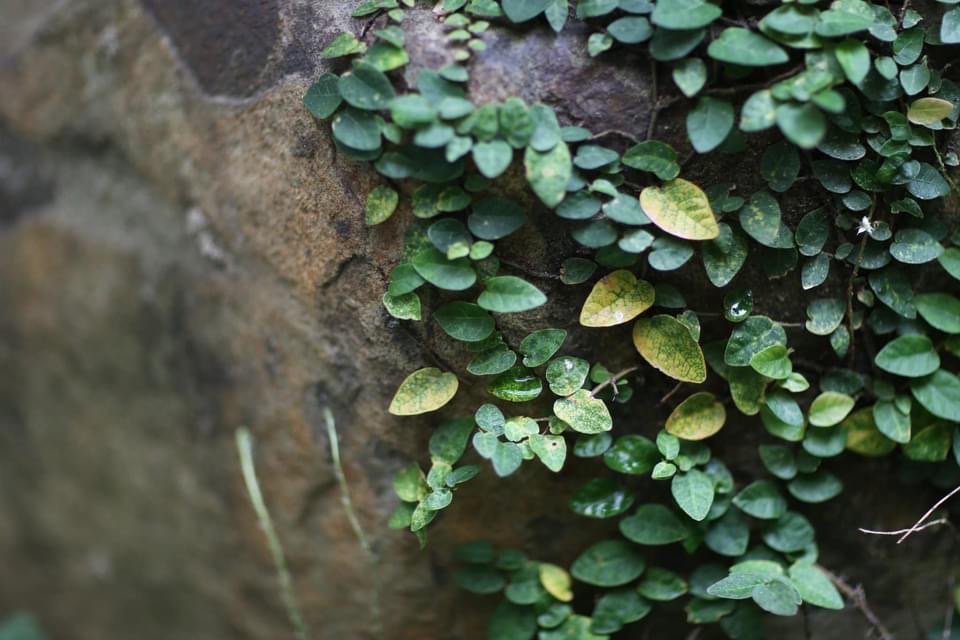
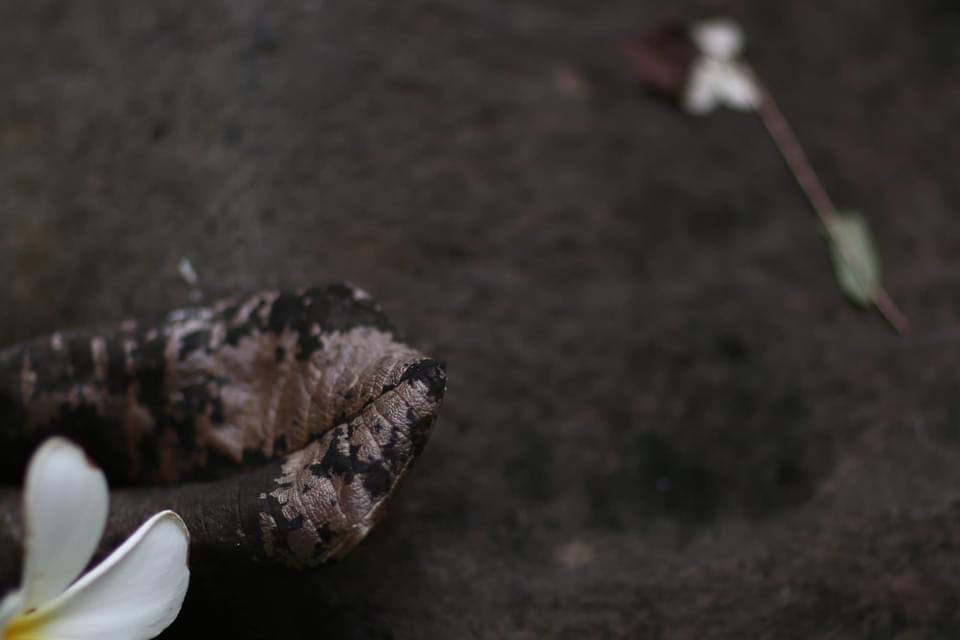
Next project | Le Ba Dang Memory Space
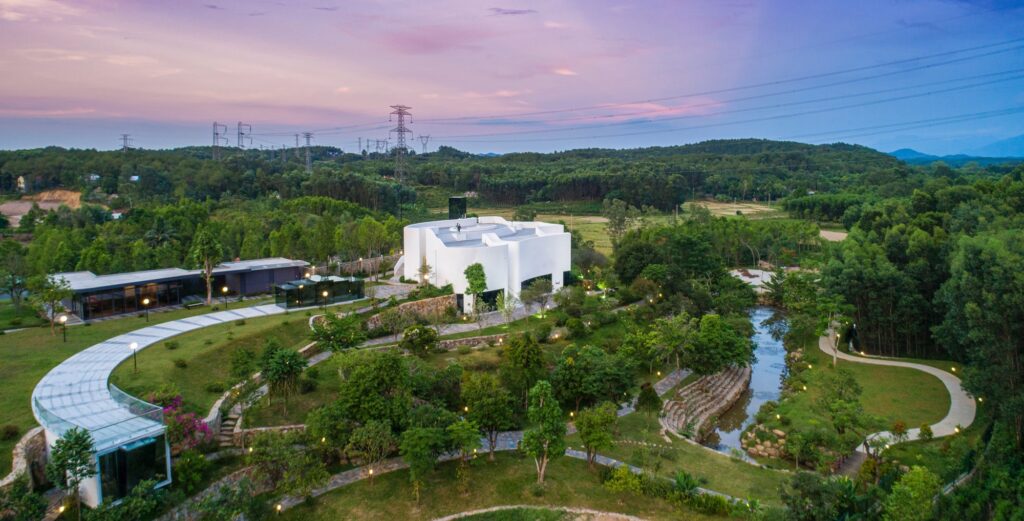
LE BA DANG MEMORY SPACE
A PRIVATE CONTEMPORARY ART MUSEUM, THE MOST MAGNIFICENT, STATE-OF-THE-ART AND UNIQUE ONE IN CENTRAL VIETNAM.
The landscape architecture of the museum with an area of 16.000 square meters is actually a full-scale “Lebadang Space” artwork. The paintings, sculptures, installation and “Space” artworks of the world-renowned artist Lebadang are periodically rotated with exhibition contents and display methods up to international standards. The museum is the realization of artist Lebadang’s dream about “an immense artwork, a cosmic landscape, a life in harmony with nature and towards eternity”. That the museum is located in Hue, the ancient capital of Vietnam, reveals his dream of Hue becoming the capital of Vietnamese contemporary art and culture in the 21st century.

“Đường mòn lối nhỏ lượn vòng quanh
Trăm hoa đua nở khoe hình sắc
Thấp thoáng hương quê gió nội đồng
Toàn chân đón cảnh mây trời hiện
Một chốn tiên bồng giữa thế gian.”
“Small paths that revolve around
Hundreds of flowers in bloom
Village hidden behind rice fields
Flying clouds in the sky
What a great place. ”
Architect Ho Viet Vinh

Le Ba Dang Memory Space brings the image of Co Loa into a unique creation of Vietnamese people. The emotions are depicted into the ground like a giant painting. The winding winding road leads us into the colorful reality picture, people and nature become one, the soul settles, the emotions flow. The flowers are so brilliant, the birds chirping, the wind breeze overflowing clouds, and everything resounds with true voices pulling our mind back to our childhood dream.







PROJECT INFO
| Type: | Museum |
| Year: | 2019 |
| Location: | Huong Thuy, Hue |
| Team: | Ho Viet Vinh Tran Thanh Hai Le Van Thoi Ngo Dang Linh |
| Civil Engineer: | Nam Viet |
| Contractor: | Rickenbach Development and Construction |
| Interior Designer: | Eric Mignagd |
| Lighting Designer: | Elek Co, Ltd |
| Photographer: | Dolalab |
| Structural Engineer: | Nam Viet |
PRESS:
- ART REPUBLIK 1, Elitism for all, Spring-Summer 2020
Next project | Melaleuca Forest
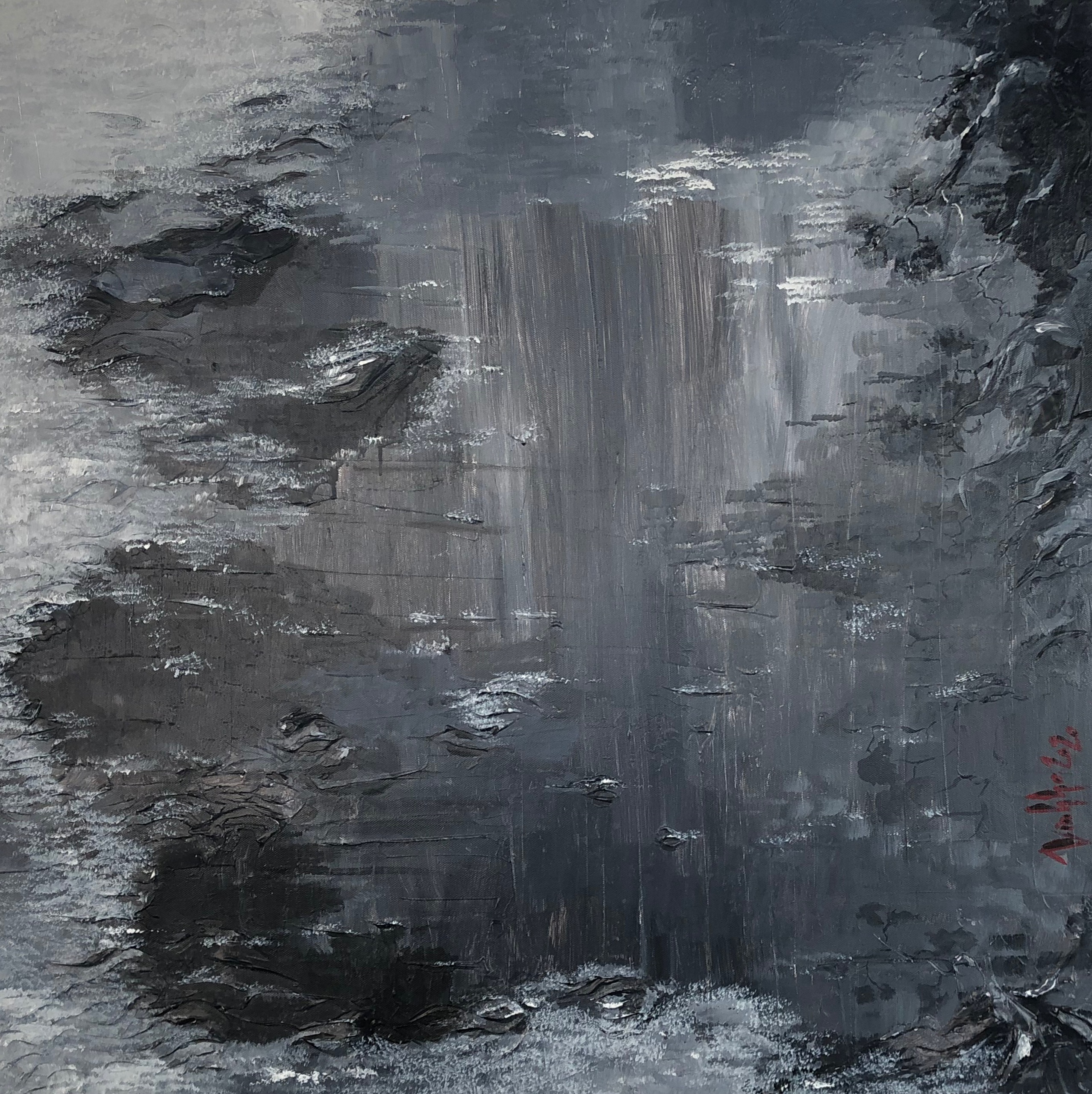
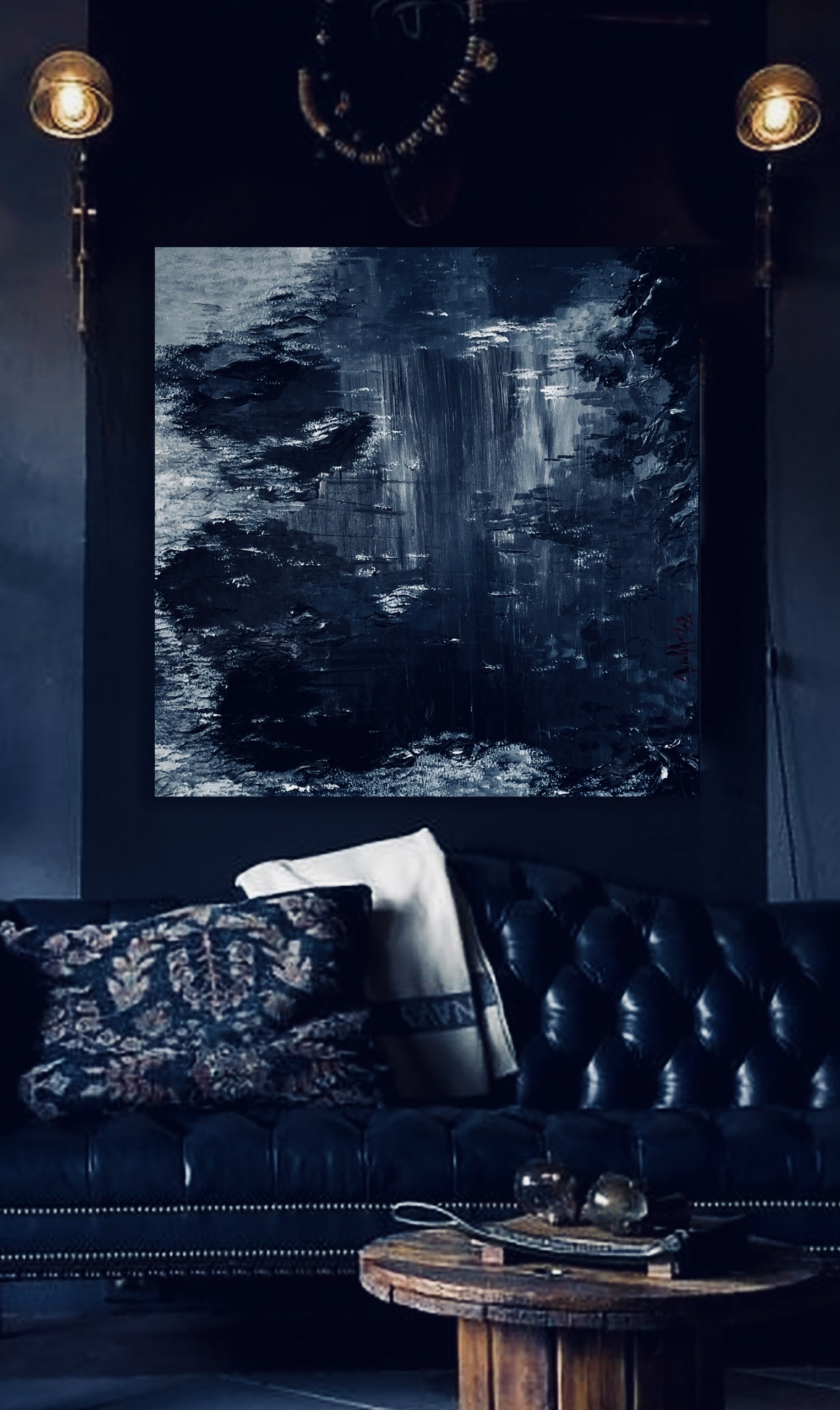
Description
Exucuted in April 2020.
Styles
Lyrical Abstract
Technique
Acrylic on Canvas
Dimensions
100 W x 100 H x 5 D cm
The authenticity of this work has been confirmed by the HVV Architect &Partners. A certificate of authenticity maybe delivered by the Company upon request to the buyer.

Vinhho Biography
Ho Viet Vinh, a Vietnamese, graduated with a Bachelor of Architecture degree in 1995 from the University of Architecture of Ho Chi Minh city, Viet Nam; he received the award for the creative design in the Final Year. He is a Registered Architect in Viet Nam and also a Registered Urban Planner in Ho Chi Minh city, as well as a Member of Association of Architects and Urban planners of Viet Nam. Ho Viet Vinh career began in 1995 when he did some competitions in Ho Chi Minh city. He becomes lecturer of Urban planning Department of University of Architecture in 1995. In 1998 He received second prize of international competition held by Summer workshop of Cergy Pontoise-France with subject “Ho Chi Minh city and Saigon river”. In 2005 He awarded special prize of international competition held by Summer workshop of Cergy Pontoise-France with subject “Can Gio Emotional city”. In 2010 he participated the International Visistor Leadership Program of USA in subject Sustainable Urban Planning. In 2015 He is choosen by Lebadang Creative Foundation to design the Lebadang Memory Space Museum in Hue. It was at this time that He becomes Director of that Fund.
Next project | The VIDE Villa
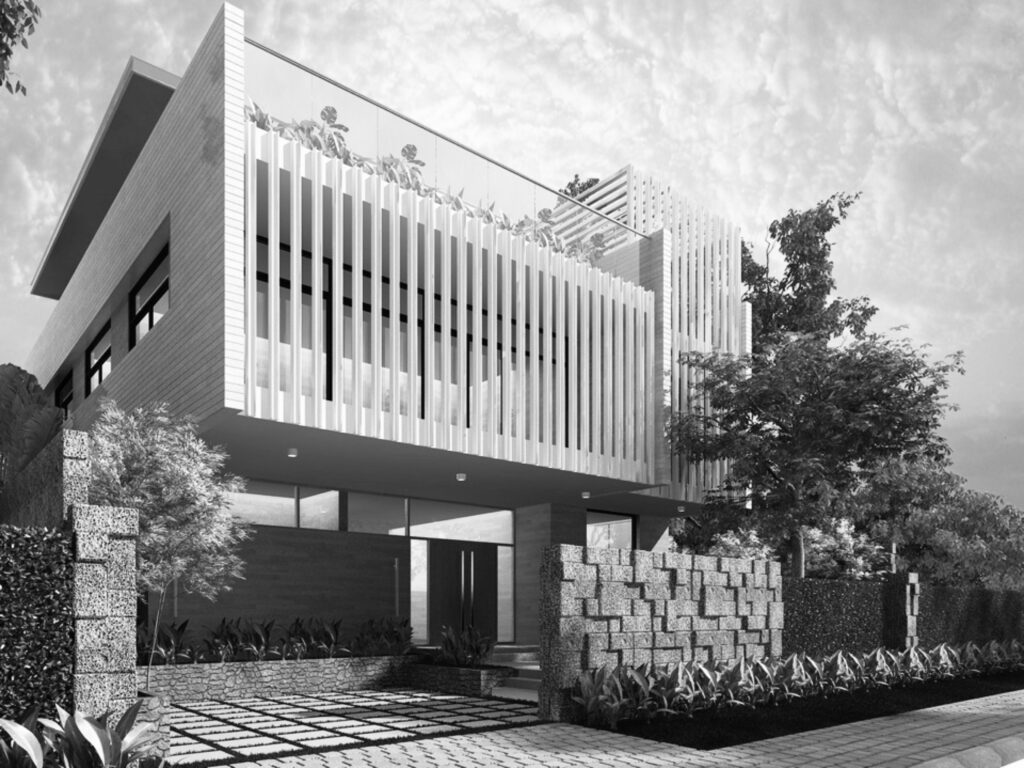

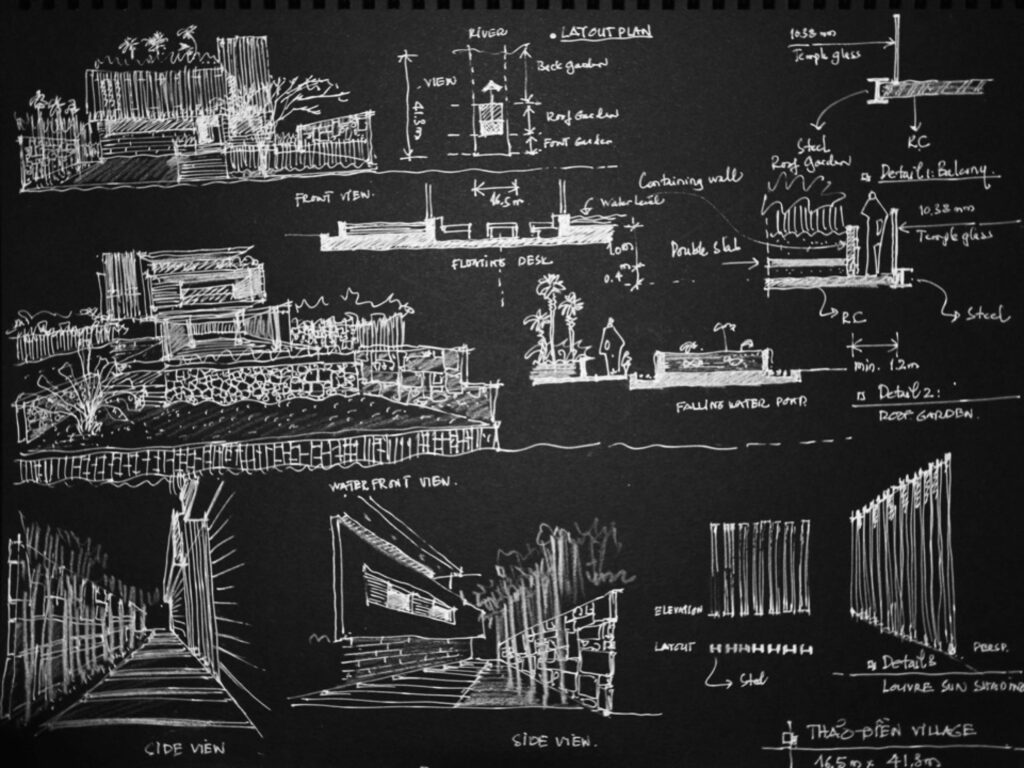
Next project | Angel

The powerful little angels are flying freely in the world of perfection. Each angel represents each characteristic of the ego, breaking free from bondage, being free and enjoying the triumphant moments of the long journey to eliminate the ego.
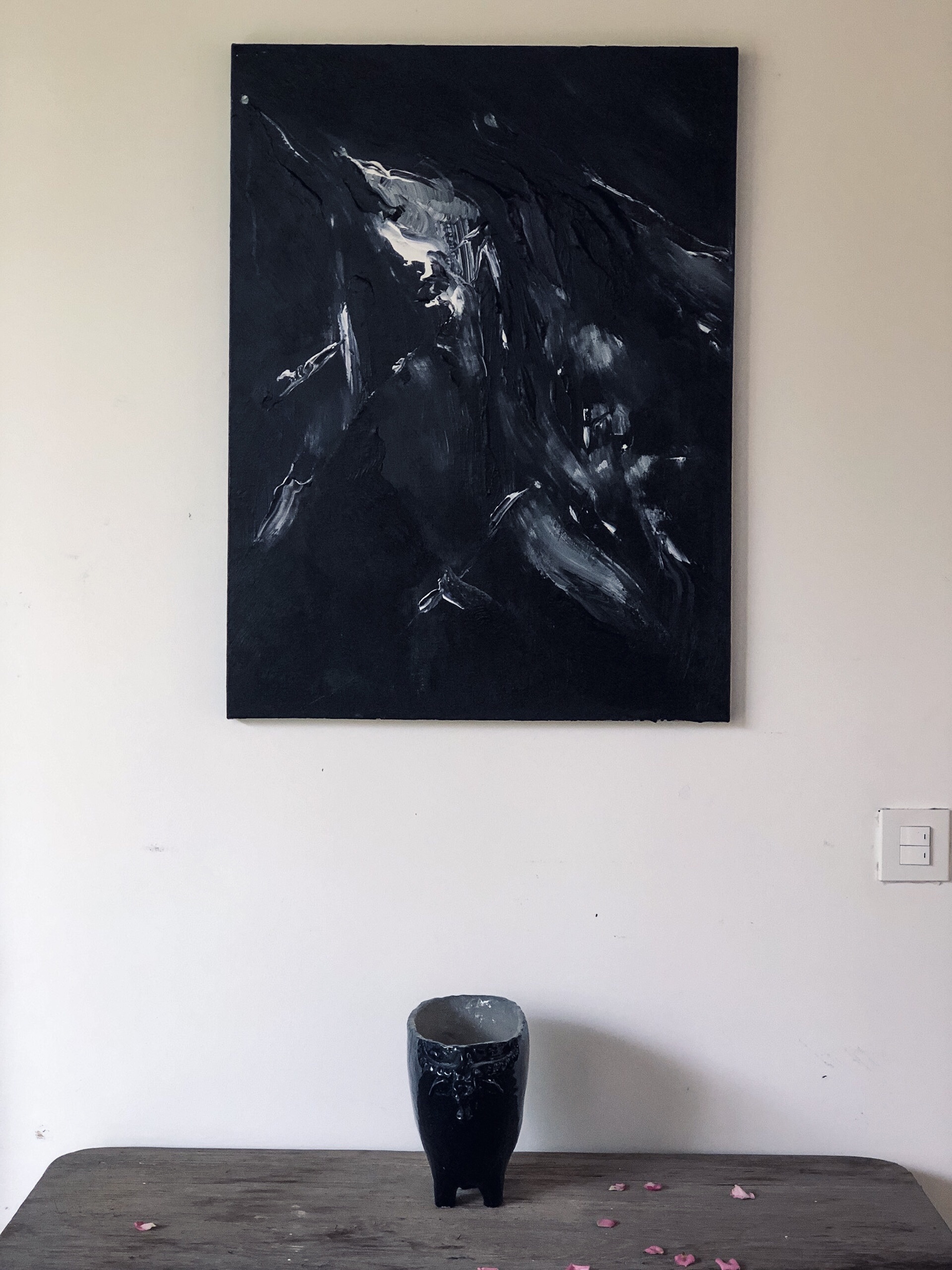
Description
Exucuted in April 2020.
Styles
Lyrical Abstract
Technique
Acrylic on Canvas
Dimensions
60 Wx 80 H x 2 D cm
The authenticity of this work has been confirmed by the HVV Architect &Partners. A certificate of authenticity maybe delivered by the Company upon request to the buyer.
Vinhho Biography
Ho Viet Vinh, a Vietnamese, graduated with a Bachelor of Architecture degree in 1995 from the University of Architecture of Ho Chi Minh city, Viet Nam; he received the award for the creative design in the Final Year. He is a Registered Architect in Viet Nam and also a Registered Urban Planner in Ho Chi Minh city, as well as a Member of Association of Architects and Urban planners of Viet Nam. Ho Viet Vinh career began in 1995 when he did some competitions in Ho Chi Minh city. He becomes lecturer of Urban planning Department of University of Architecture in 1995. In 1998 He received second prize of international competition held by Summer workshop of Cergy Pontoise-France with subject “Ho Chi Minh city and Saigon river”. In 2005 He awarded special prize of international competition held by Summer workshop of Cergy Pontoise-France with subject “Can Gio Emotional city”. In 2010 he participated the International Visistor Leadership Program of USA in subject Sustainable Urban Planning. In 2015 He is choosen by Lebadang Creative Foundation to design the Lebadang Memory Space Museum in Hue. It was at this time that He becomes Director of that Fund.
Next project | PHU DOAN PLAZA

Phu Doan Plaza at Committee Popular of Thua Thien Hue province (also called City Hall) is a lively and contemporary embodiment as a “Hue ancient capital”. Today the Plaza is an inclusive hub of Hue’s life outdoors but for decades this was not the case. Prior to renovation Plaza was an uninviting and inaccessible maze of raised and sunken terraces, hidden passageways, and gloomy malnourished trees. The opportunity for change raised the park, both physically and metaphorically, to the prominence of its location at the foot of Hue City Hall. The Plaza provides universal accessibility by bringing the entire site to street level, and encourages use throughout the day. The entire Plaza, with its generous lawn, interactive fountain, café, and ample seating amidst green groves of native plantings, are all built atop the nexus of Hue City center’s multi-modal transit system and acts as a connective gateway to all neighborhoods. The park functions as a 8.190 sq.m creating a welcome all-season spot for relaxation and public recreation.
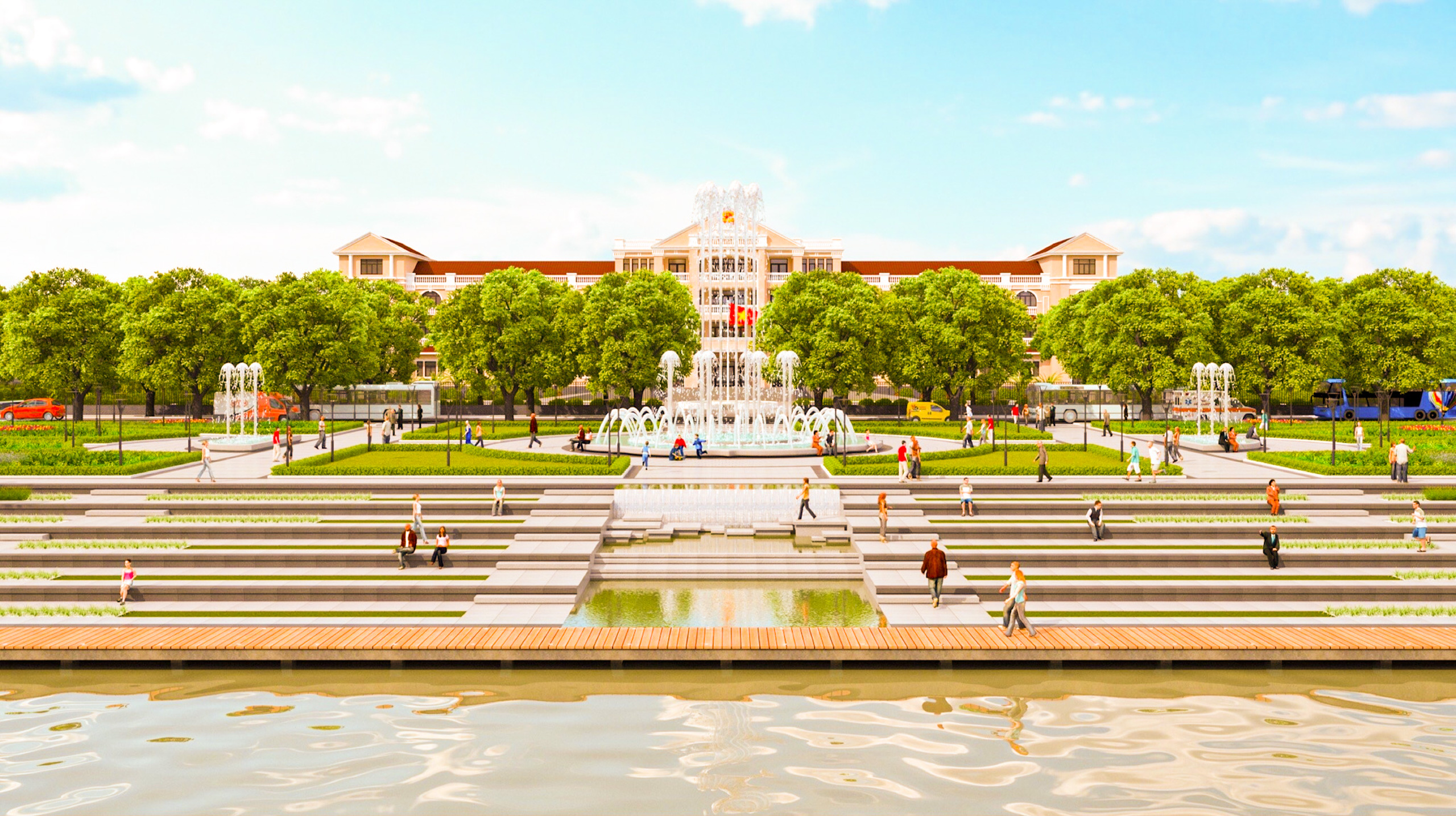
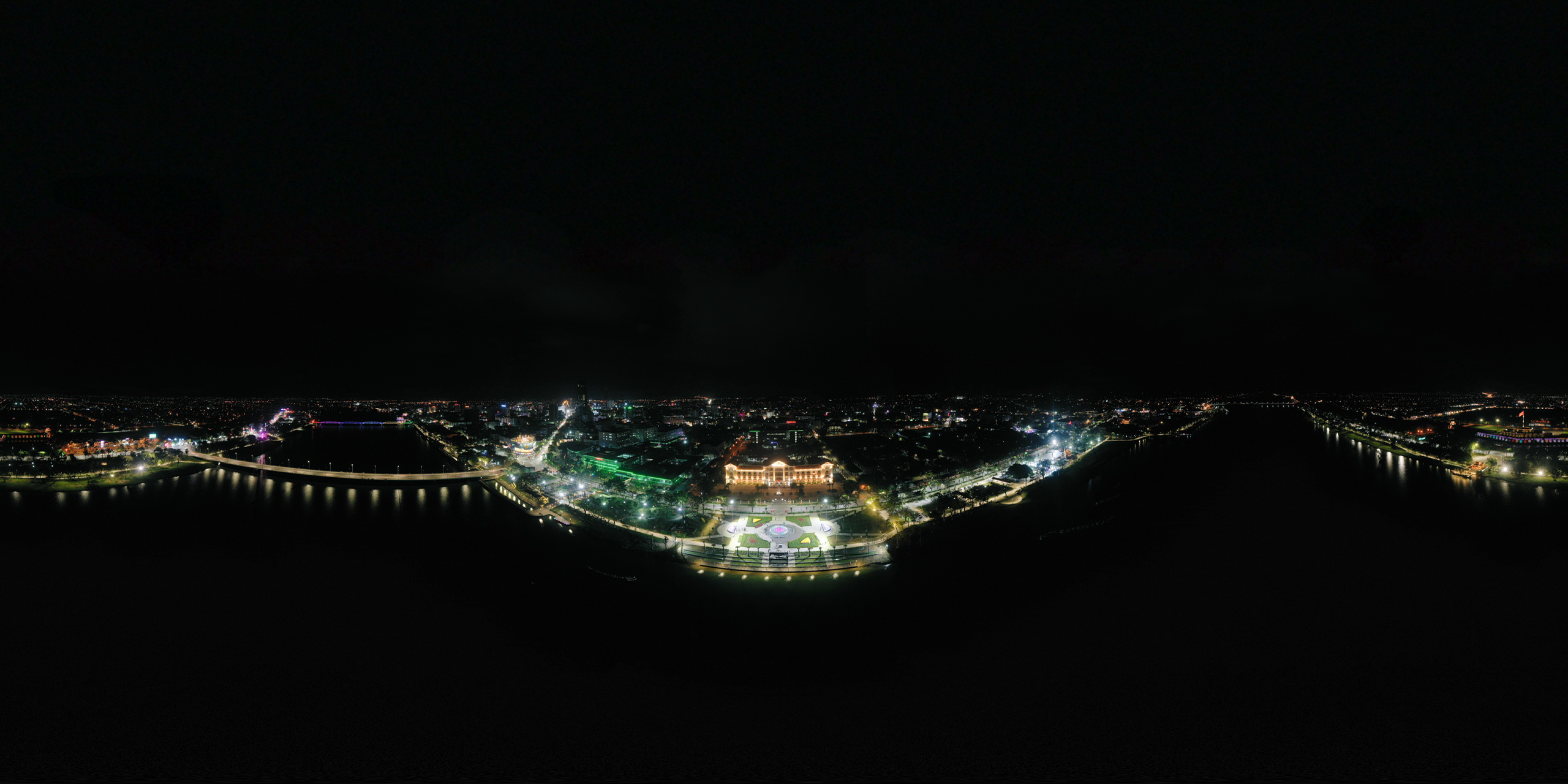
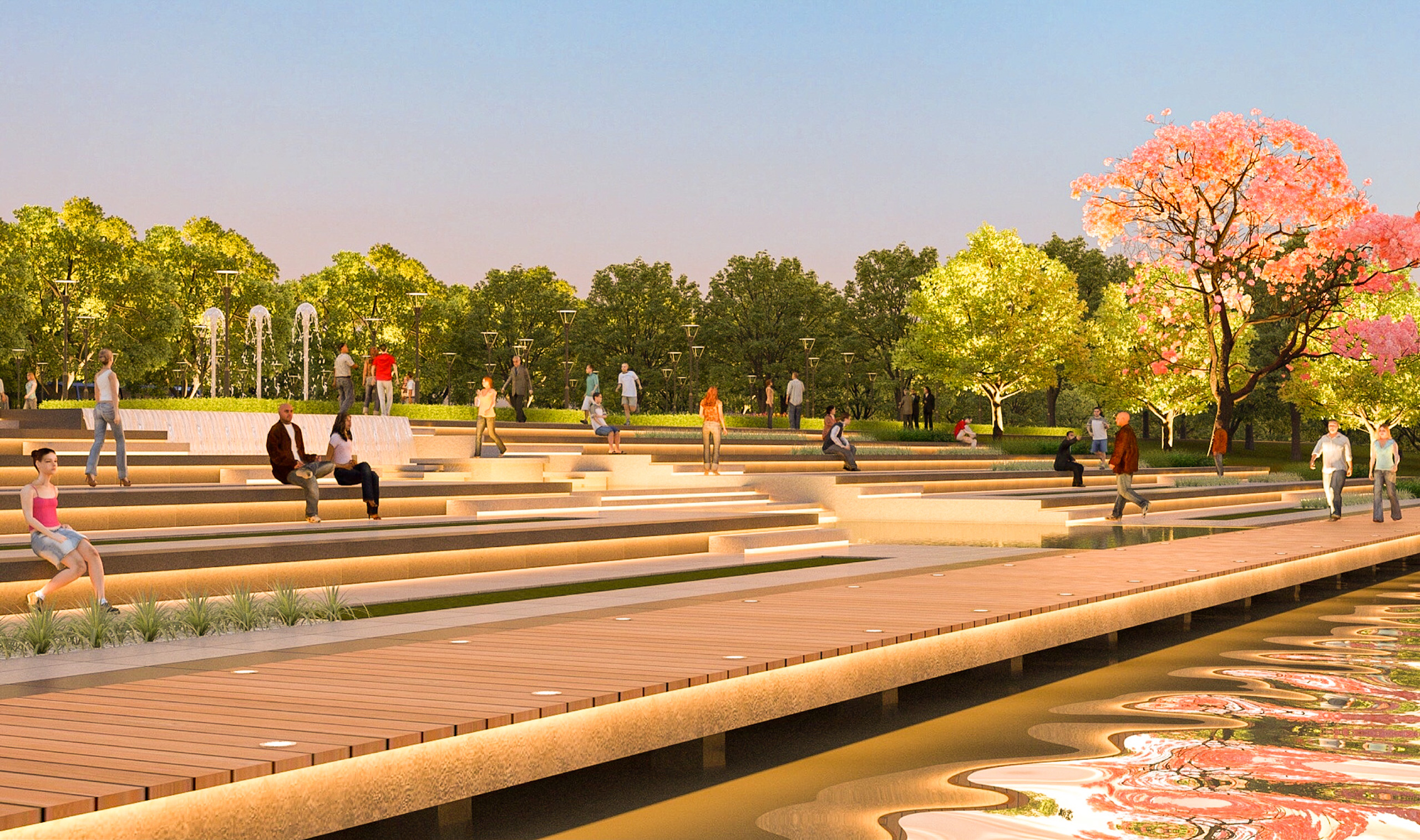
Products
- Landscape Forms
- Granite Stone
- Advanced Soil Technologies
Plant List:
- Bombax ceiba
- Asian palmyra palm
- Laurus nobilis
- Cinnamomum camphora
PROJECT INFO
| Type: | Public Realm |
| Year: | 2020 |
| Location: | Hue City, Thua Thien Province |
| Team: | Ho Viet Vinh Ngo Hai Tan Duong Thi Thanh Thanh Nguyen Dinh Nhat Thu |
Next project | Marina Saigon Villa
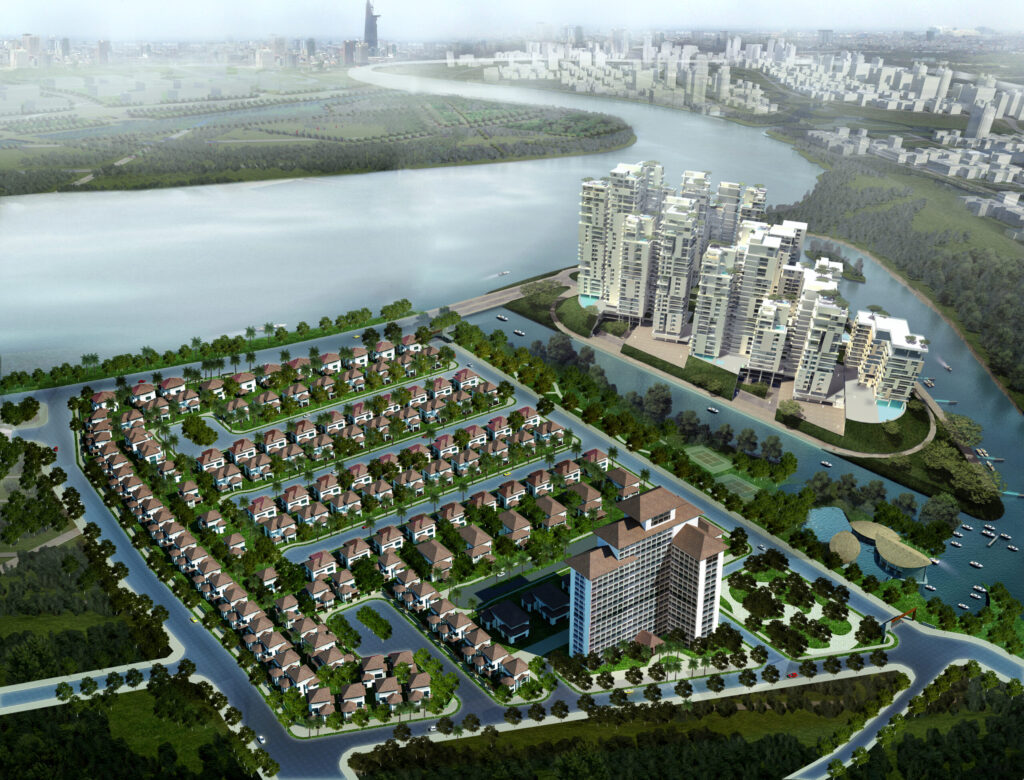
Lifestyle in marina has its own taste and the lifestyle at Marina Saigon Villa is special in the way you enjoy your own life. Even if you’ve never owned a yacht, you’ll easily join the club of hobby-loving descendants of nineteenth-century European aristocrats. Starting from the Marina with sparkling turquoise sails at the place of every villa, you manually control the yacht to satisfy conquering emotional moments.
Every time you step on the yacht, you will understand that time is never an issue for you to come to the trading center and stock exchange right in the heart of Saigon Trade Center.
- After a few minutes on the yacht, you have touched your favorite golf club.
- About 30 minutes to cross the Saigon River to enjoy the fresh air in Can Gio Unesco Biosphere Reserved and only that much time to go upstream to Cu Chi tunnels or anywhere you want to go.
- Discover the beauty of the landscape of the vast river and sky.
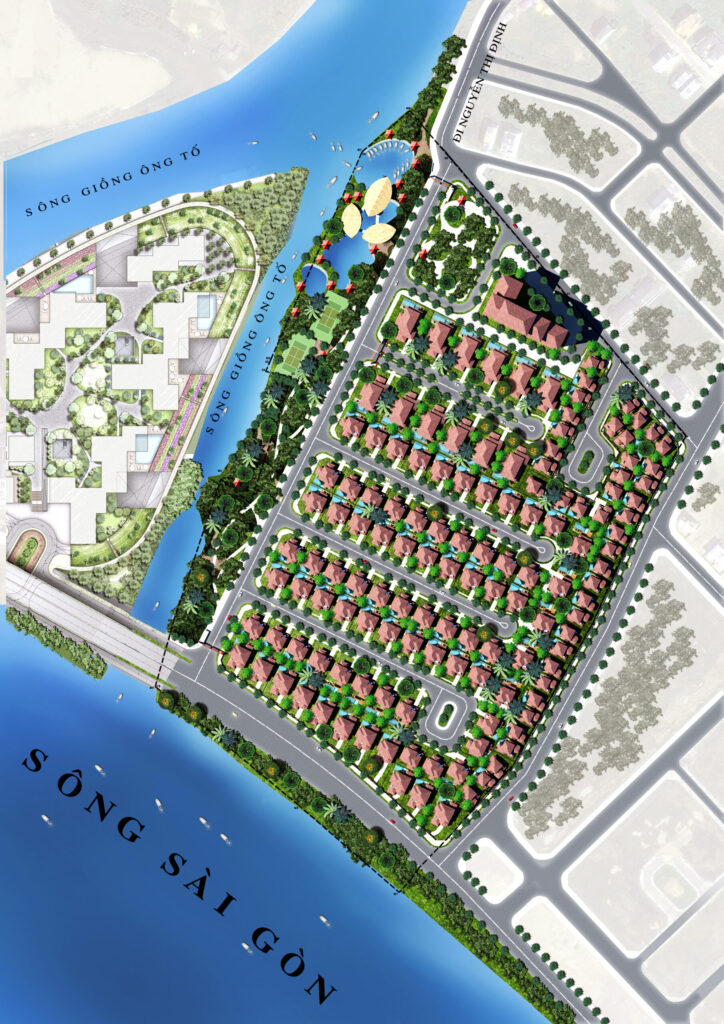
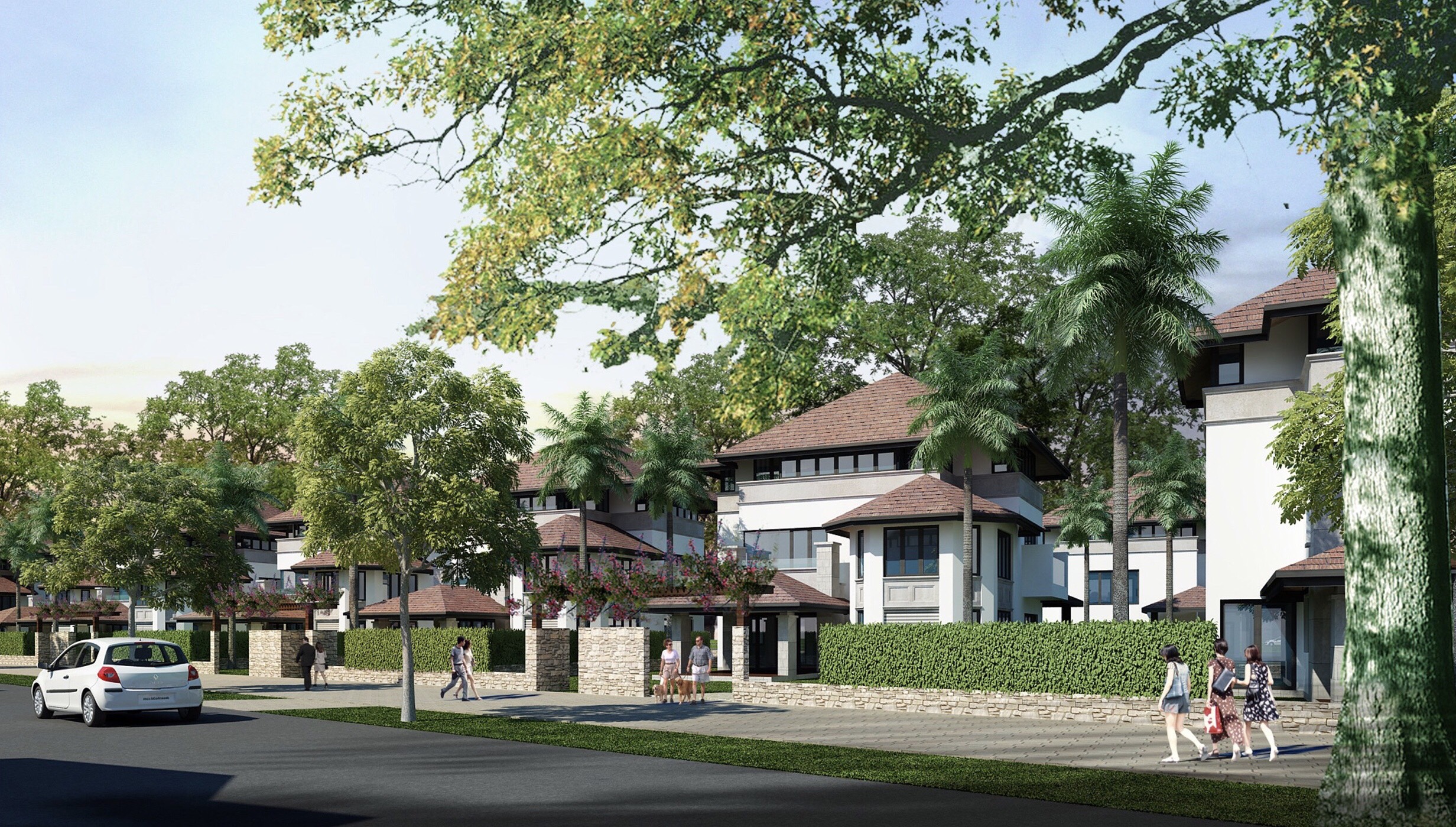
PROJECT INFO
| Type: | Residential |
| Year: | 2015 |
| Area: | 20 hectares |
| Location: | District 2, Ho Chi Minh City |
| Team: | Ho Viet Vinh Tran Thanh Hai Nguyen Dinh Nhat Thu Truong Anh Thu |
Next project | Maison de Corail
Maison de Corail

A PRIVATE CONTEMPORARY ART HOUSE, THE MOST MAGNIFICENT, STATE-OF-THE-ART AND UNIQUE ONE IN SOUTHERN VIETNAM.
The concept of the project is a hybrid space, there is no determination or boundaries. We want a space that integrates botany, meditation and art where people can feel free to take care of themselves, slowly with relaxation. Using nostalgia and natural matter, crafted by artisan hands, paintings that desire to finding beauty in imperfection but real environments. The facade make by breezeway blocks to allow sun and wind in, to avoid artificial air conditioning systems. The general purpose is to create a minimalist lifestyle in which a slow passing of time. The lava stones react shades to the sunlight movement along the day. Various forms are manifested by the light gradually moving. A spiral staircase along the courtyard has a rendered banister and concrete treads. It leads up to an open art workshop and meditation space.

“Ẩn tàng chốn lạ mà quen
Lá chen mây trắng hoa chèn sắc hương
Ngõ vương ánh nắng qua đường
Yêu thương đọng lại khu vườn ngày xưa.”
“Strange but familiar hidden place
Leaves insert flowers into white clouds
Light alley across the street
Love leaves the old garden. ”
Architect Ho Viet Vinh















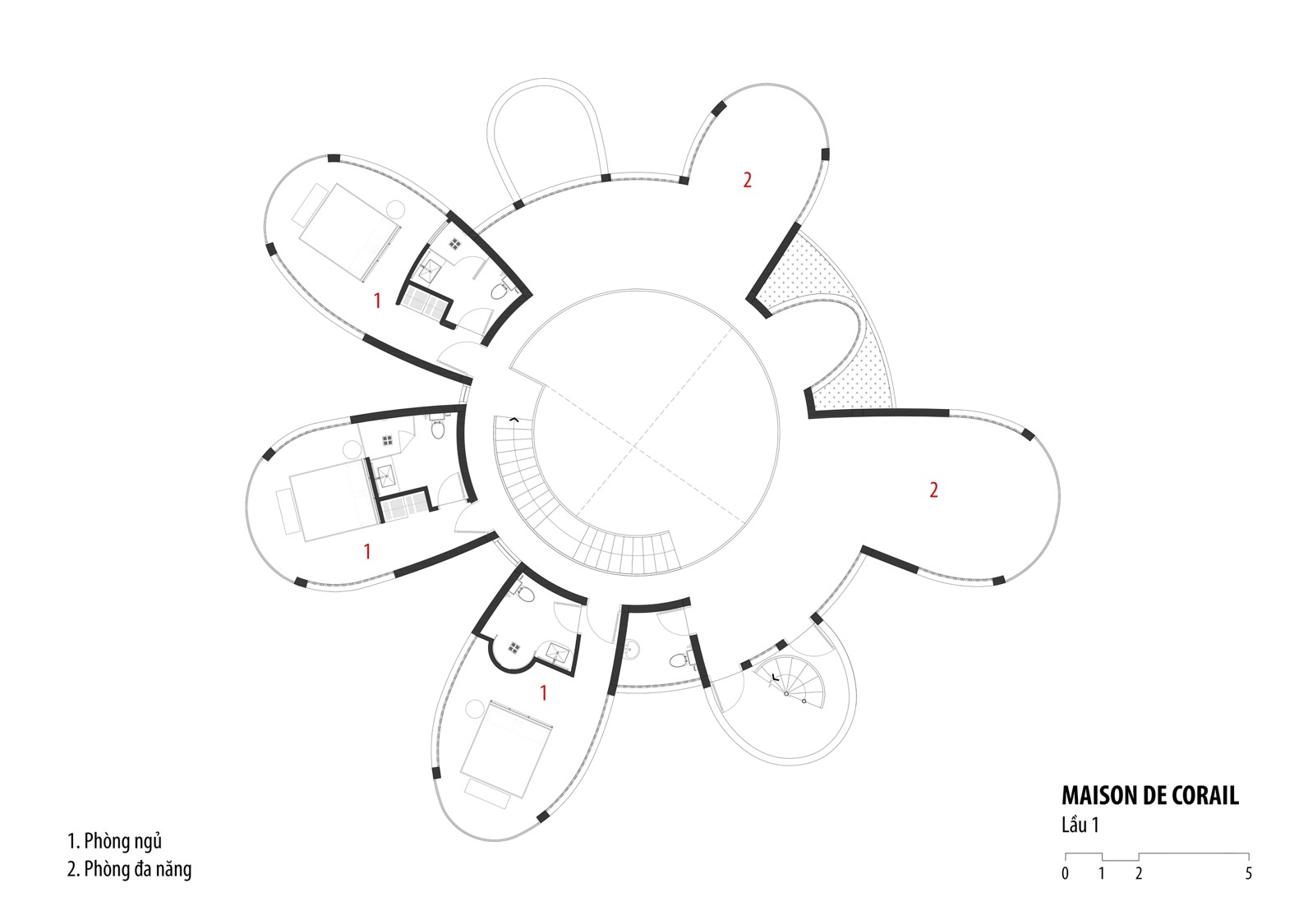


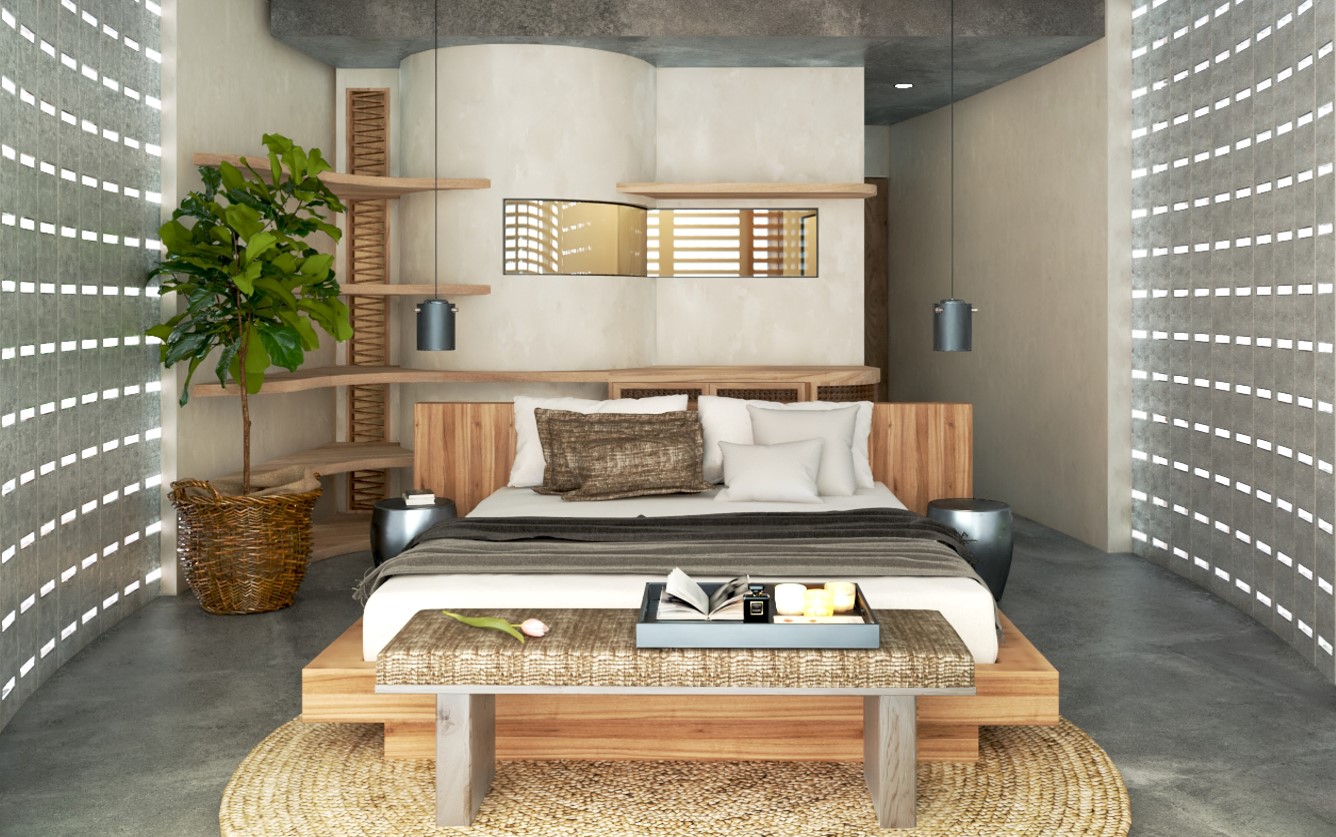

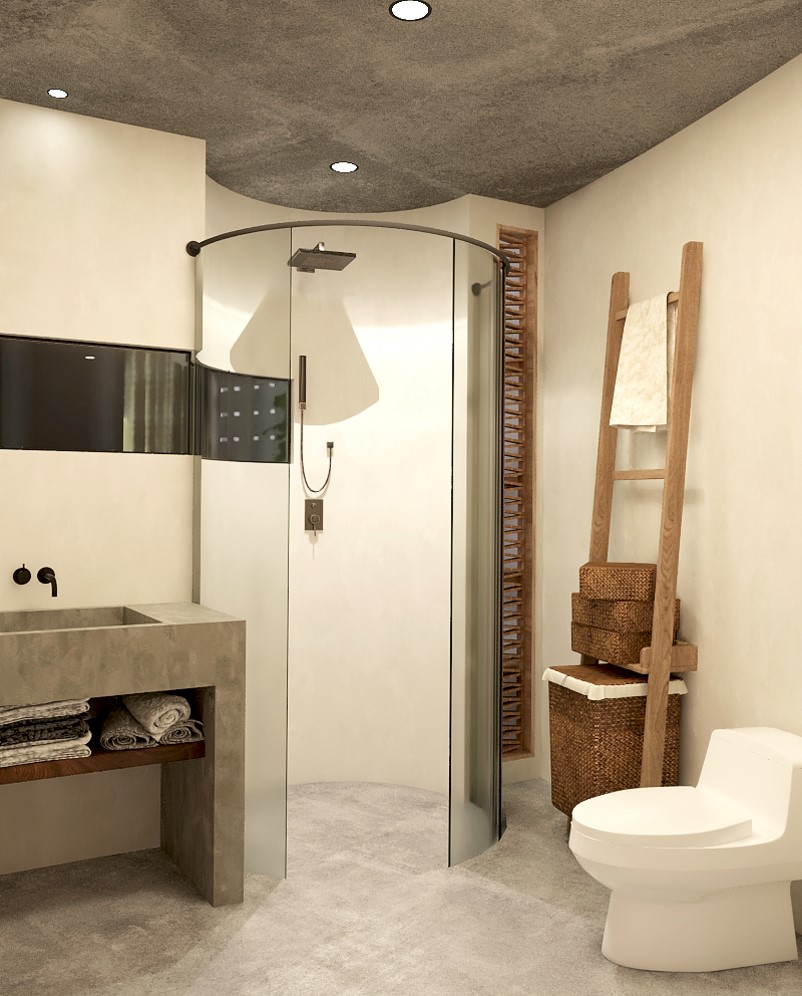
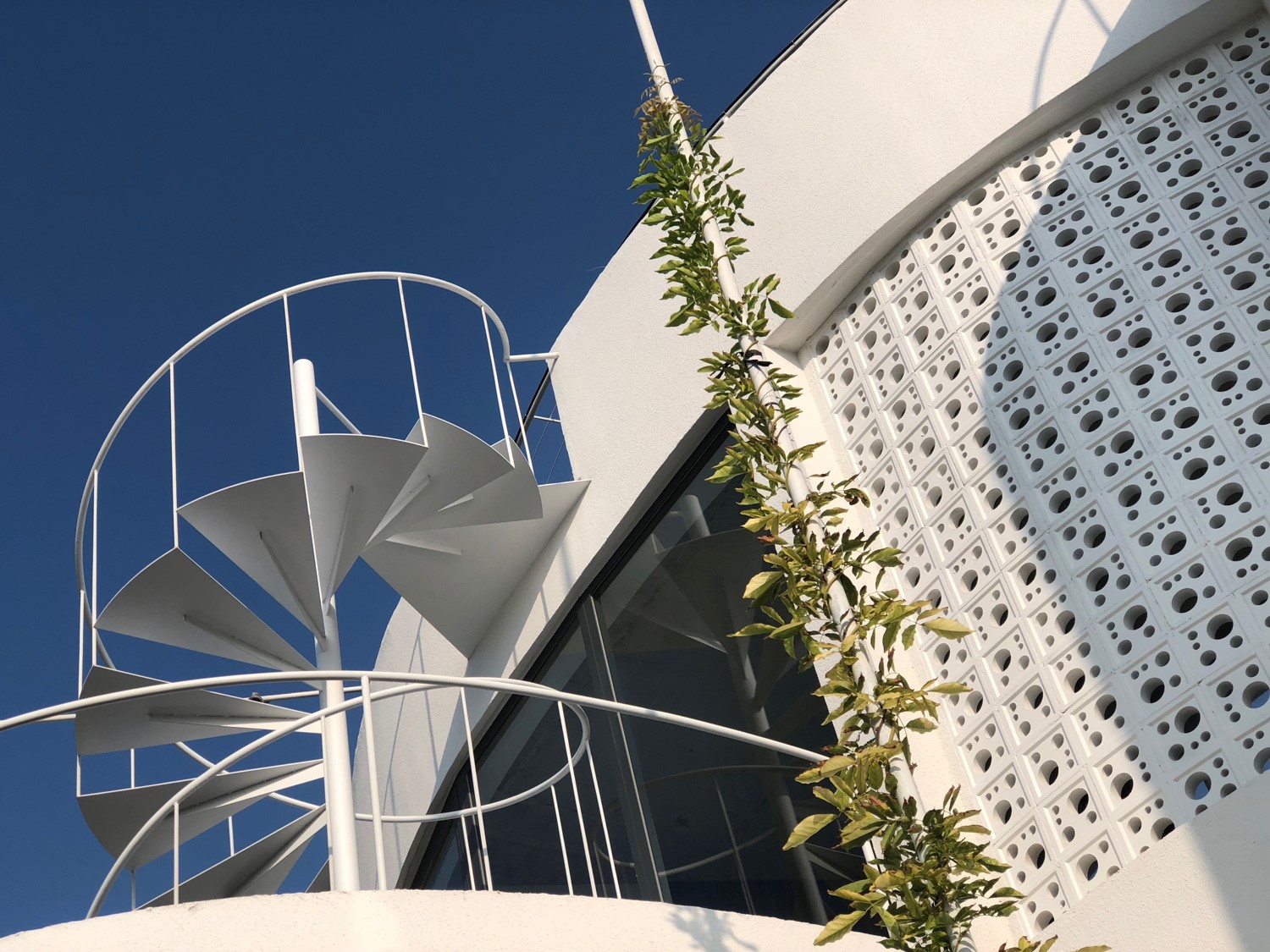
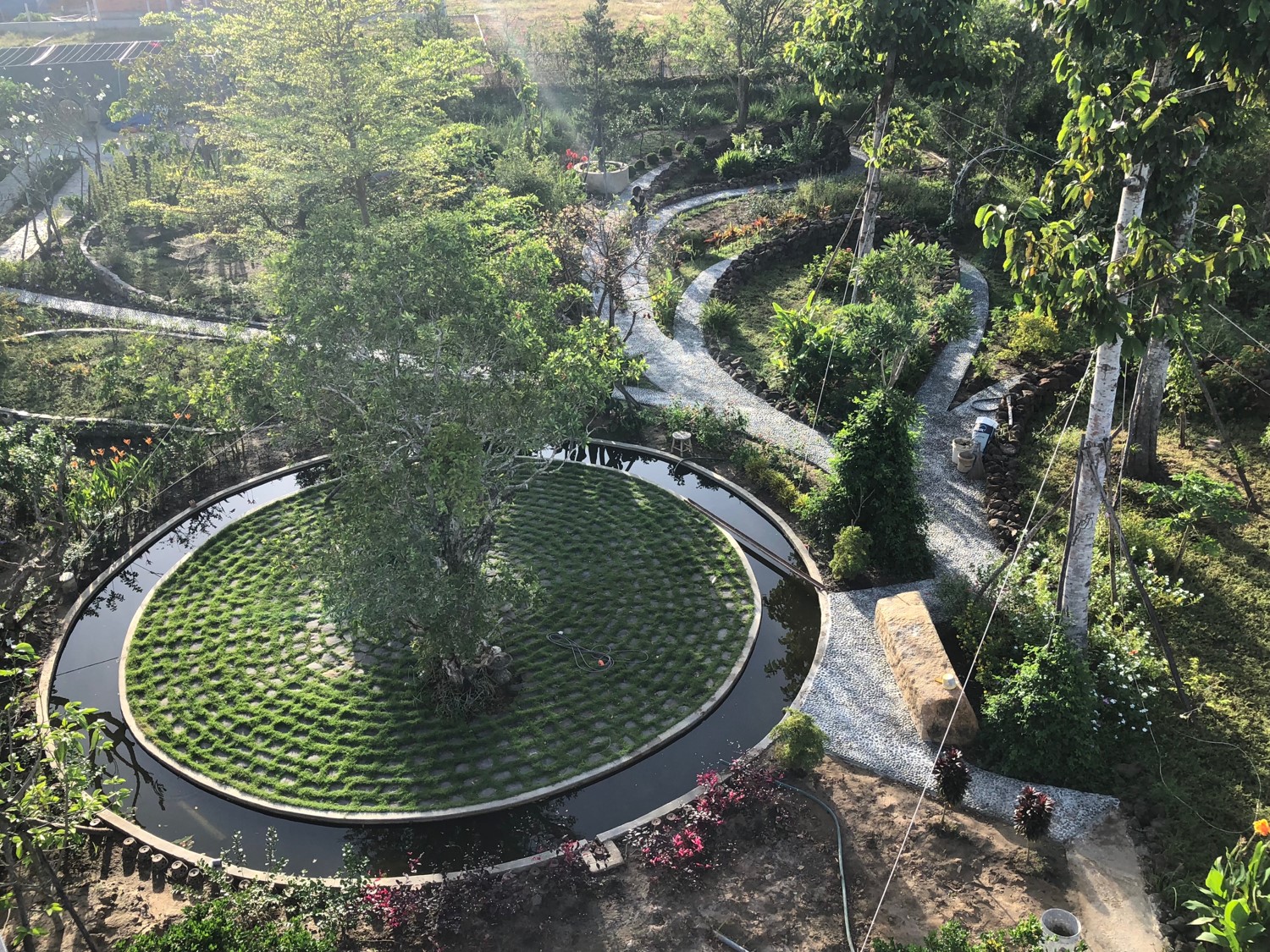
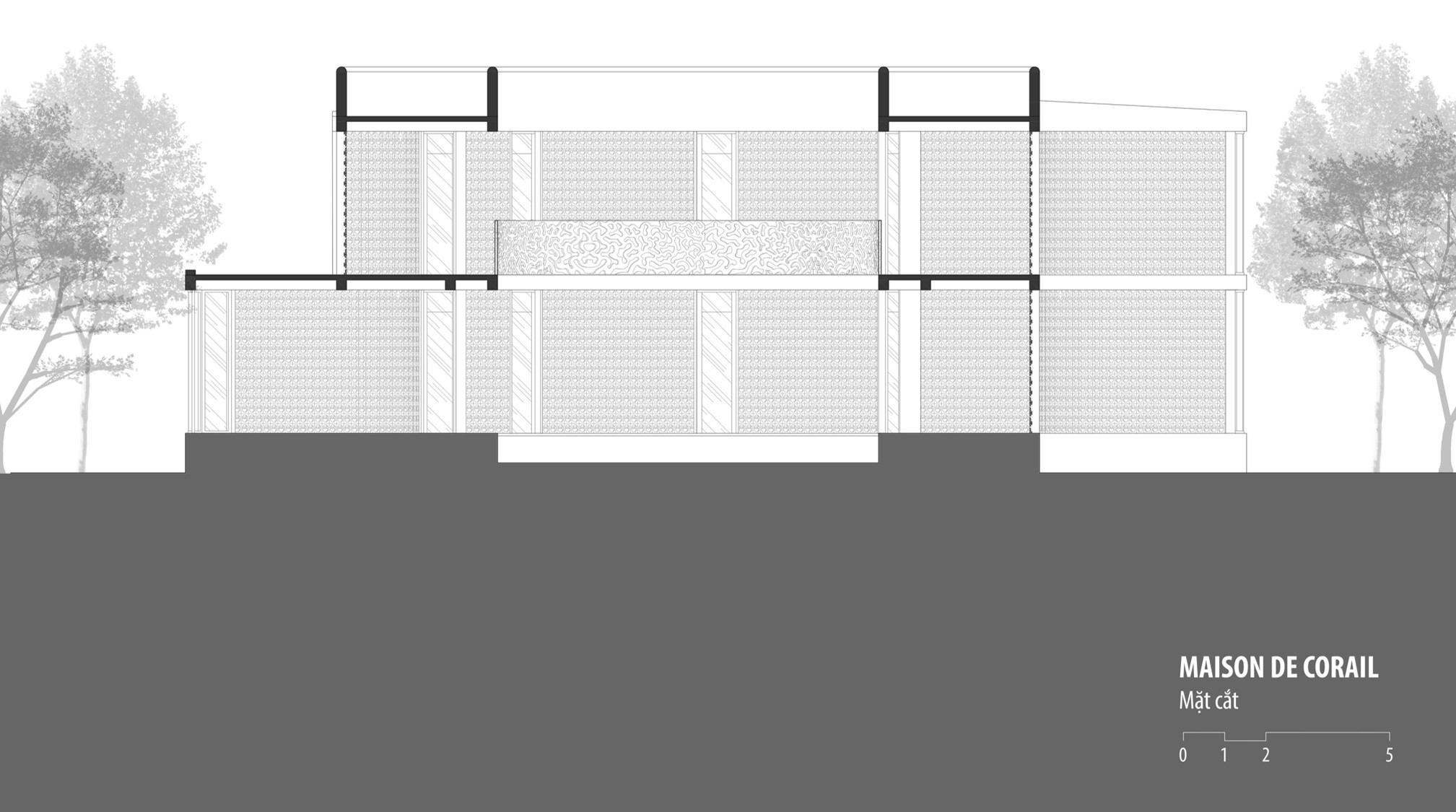
PROJECT INFO
| Type: | Residential |
| Year: | 2020 |
| Location: | Ho Tram, Ba Ria Vung Tau |
| Team: | Ho Viet Vinh Tran Thanh Hai Le Van Thoi Ngo Dang Linh |
| Contractor: | Cuong Quang Construction |
| Interior Designer: | Ho Viet Vinh |
| Photographer: | Ho Viet Vinh |
| Structural Engineer: | Nam Viet |
Next project | Mine Art Gallery
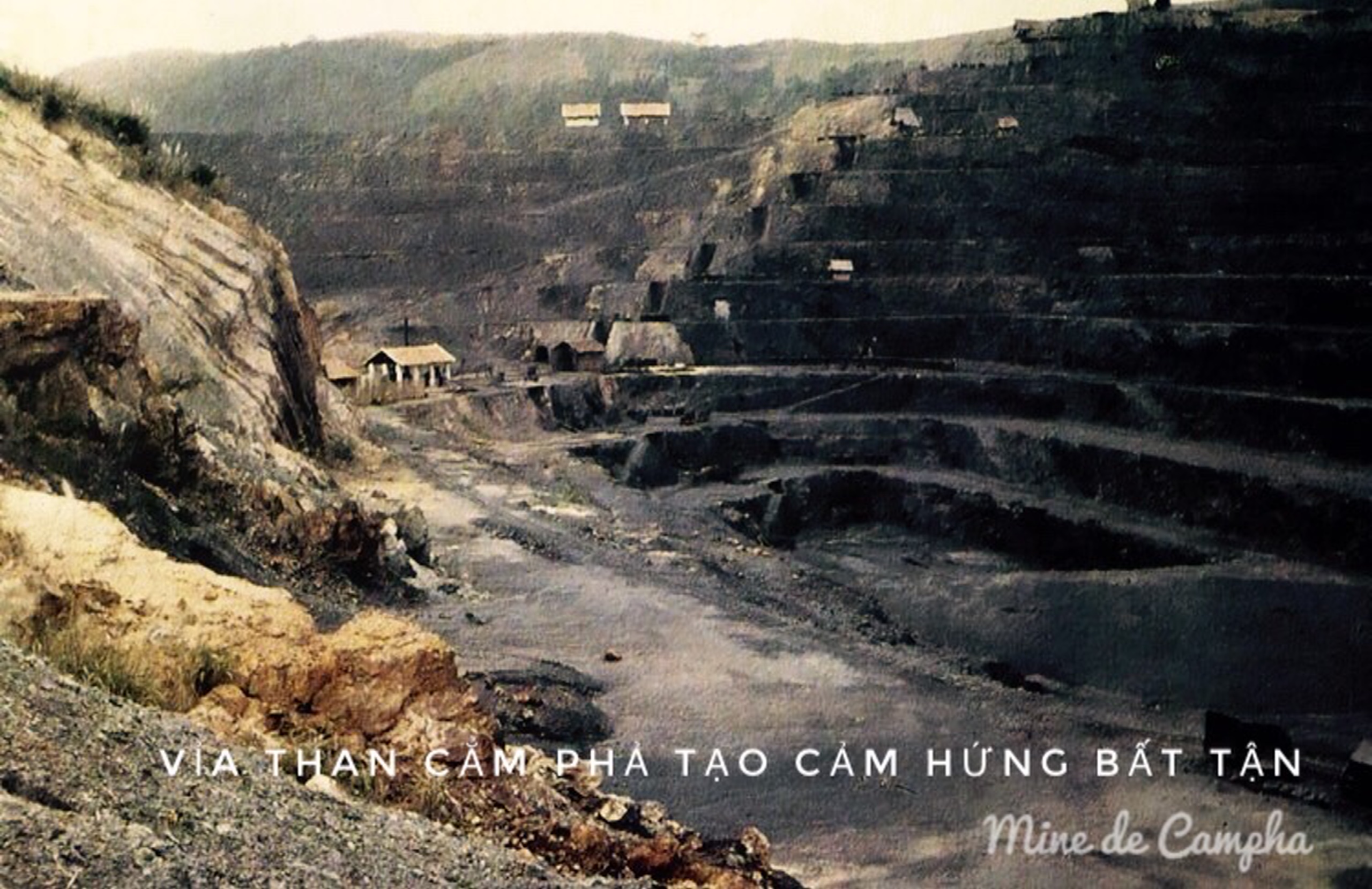
Cam Pha coal mine was established by the French in 1886 with the name Société Francais des Charbonneges du Tonkin under King Tu Duc. The stratigraphic structure of the coal mine is deepened in the shape of deep underground terraces. The coal seams gradually revealed themselves in the light that cut through the valley. The jet black color of greed mixed with the reddish brown color of the earth and the dry dust in the air: all blended to create abstract colors tinged with depth. The project is inspired by the block of coal seams that overlap in opposite directions. An inverted image of the coal seam structure to represent the remaining void. Construction materials are taken from coal seams to form stacked bricks. Space, materials and scenery seem to blend together to create the mood of the miners.
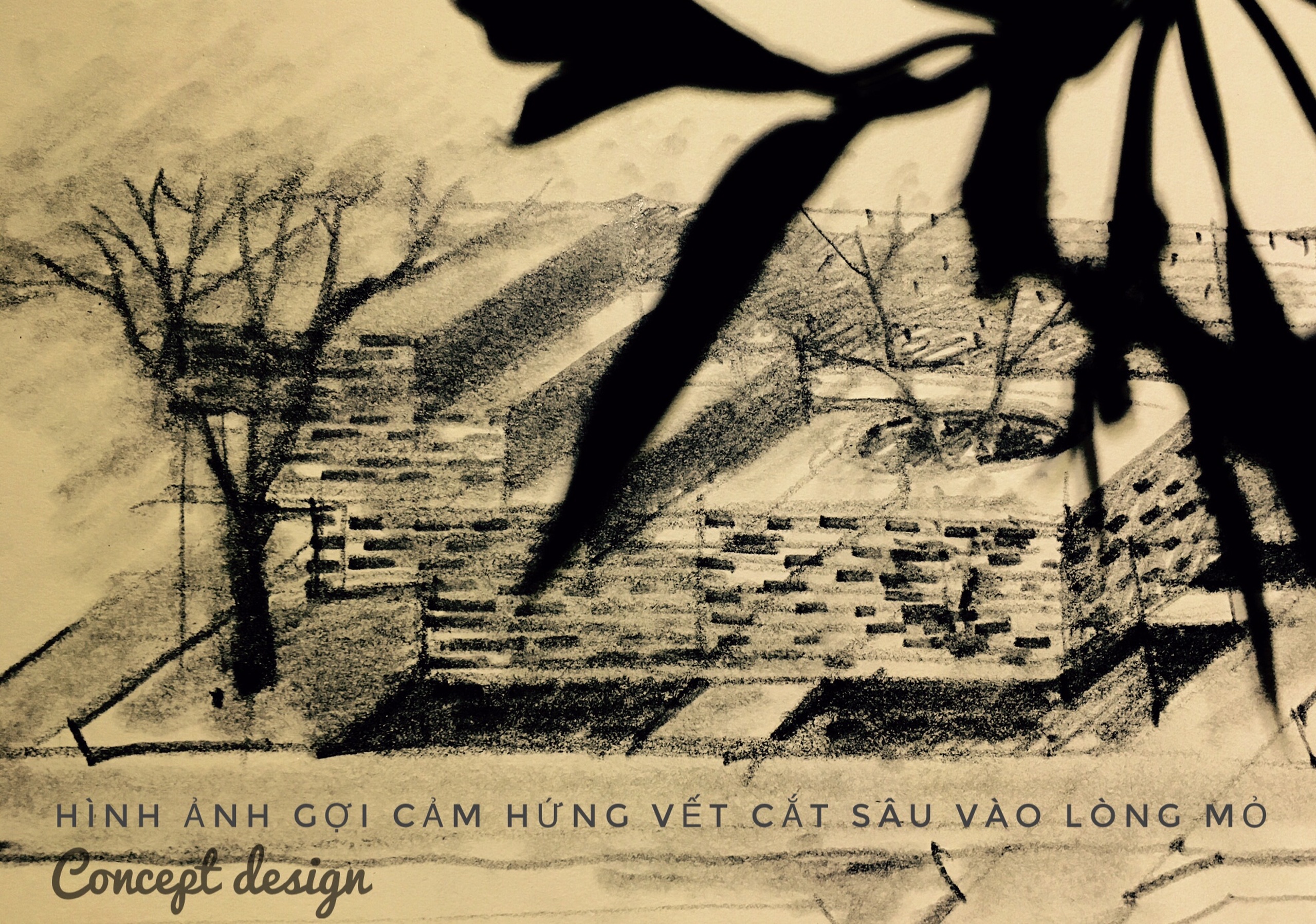
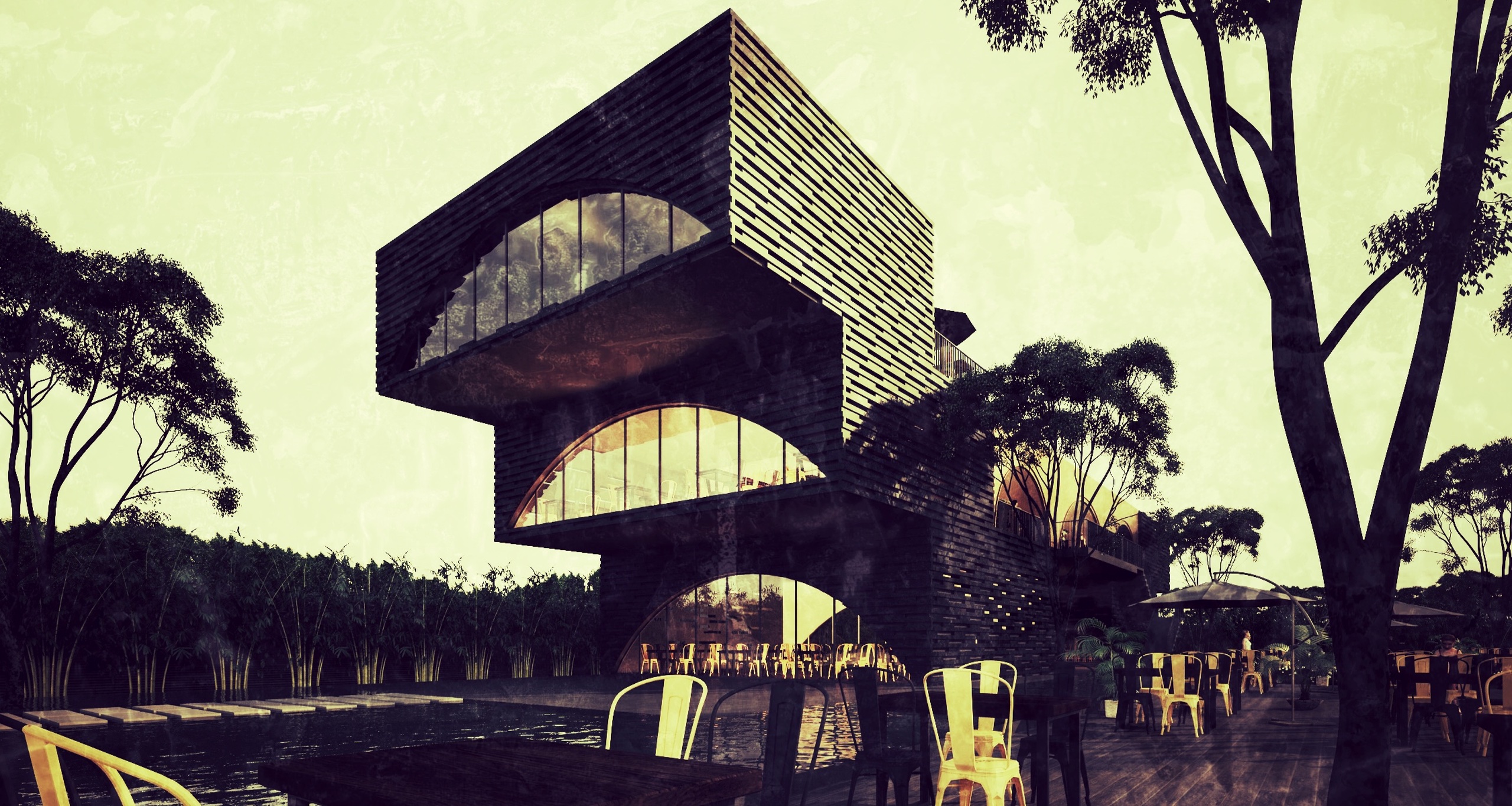
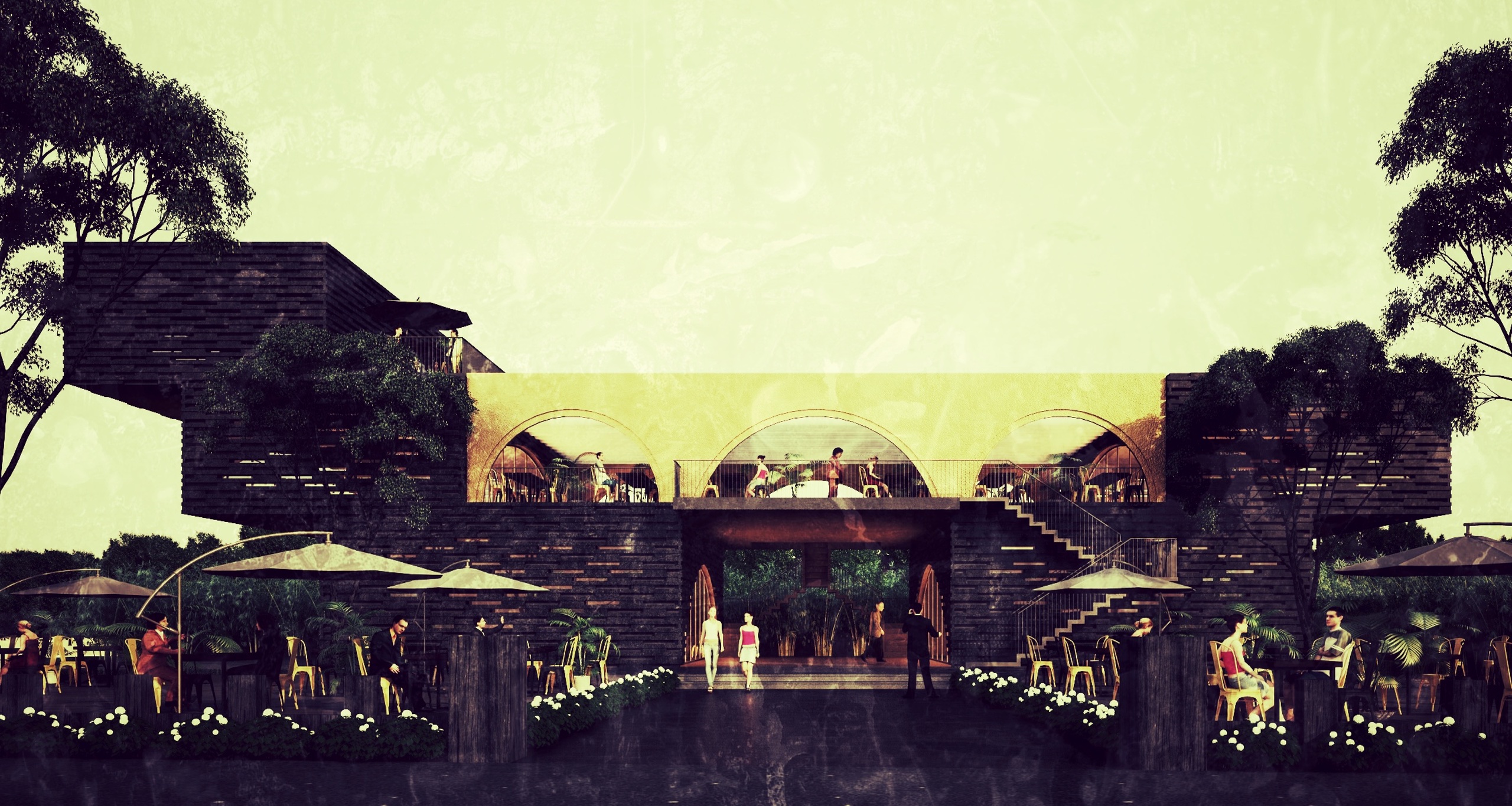
PROJECT INFO
| Type: | Gallery |
| Year: | 2016 |
| Location: | Campha City |
| Team: | Ho Viet Vinh Mai Que Vu |